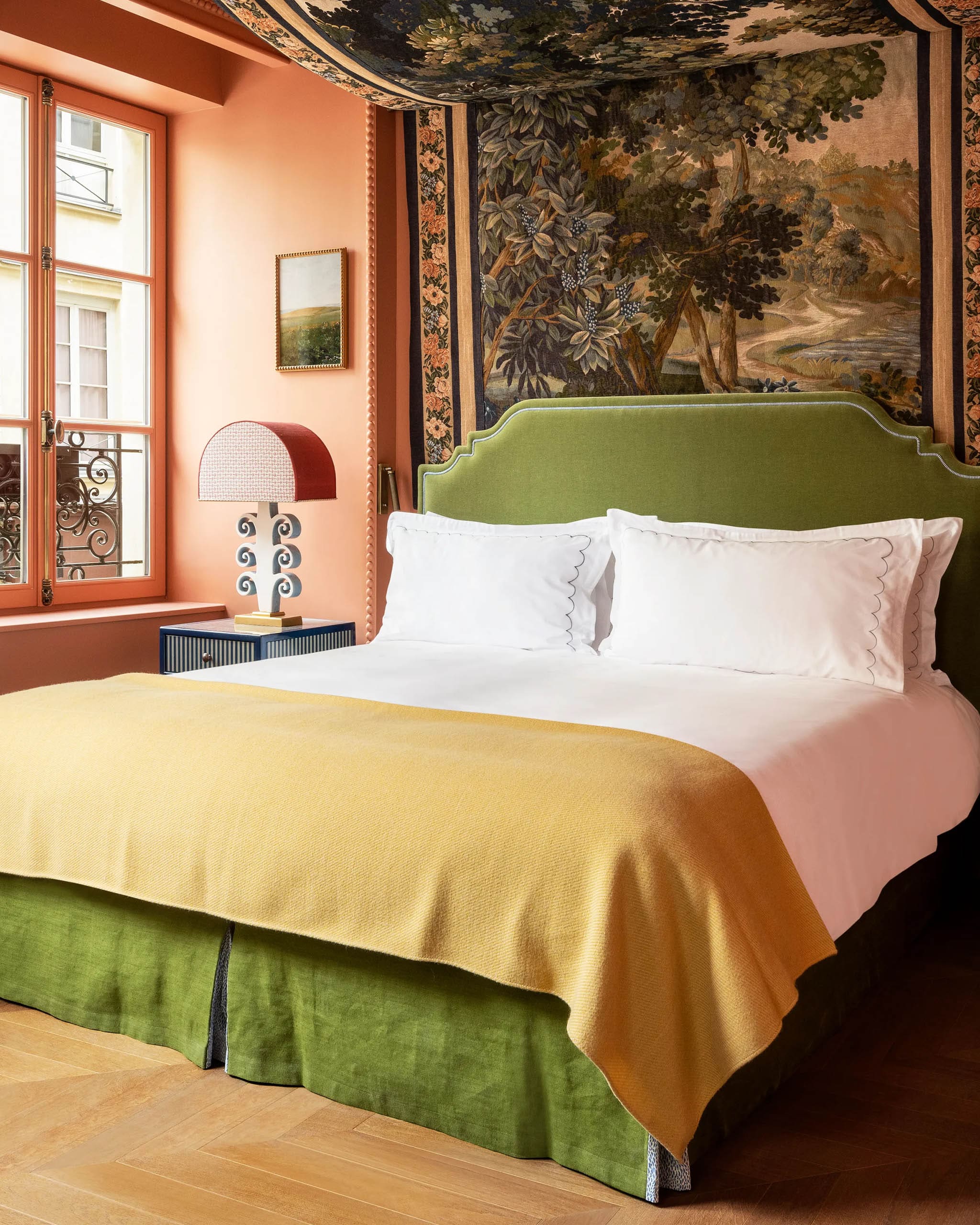Vincent Leroux
In Paris, walking into a five-star hotel can feel like entering a palace – because, well, many of them are housed in the grand Belle-Epoque and Neoclassical buildings that once belonged to kings, queens, and other members of the French aristocracy. However, when I walked into the recently opened Le Grand Mazarin in Le Marais, I found myself surrounded not by gilded mirrors and soaring ceilings, but by a reception room of warm, Venetian carnival-like pastels and accents that felt like they came from some otherworldly curiosity shop. (If those other places give off the airs of Marie Antoinette, this one evokes an eccentric, widowed Aunt Marie.)
This was very much the point: Le Grand Mazarin’s interior designer Martin Brudnizki says he was inspired by the idea of the French salon – a place where intellectuals, artists, and other fascinating people would mingle and share ideas, beginning in the 17th century. (While in the Enlightenment era, salons were the birthplace of the French Revolution, in the 1920s Gertrude Stein brought together luminaries like Ernest Hemingway and Pablo Picasso.) “Paris has always had the great hostesses who entertained like-minded artists, politicians, authors,” Brudnizki says. “We wanted to create a series of spaces within this hotel where you meet different creative people from different parts of life.”

Together with Kimberley Cohen, artistic director of Le Grand Mazarin’s parent group, Maisons Pariente, which also owns St Tropez’s Lou Pinet and Meribel’s Le Coucou, Brudnizki crafted a place that feels simultaneously intimate and flamboyant. Site-specific art takes centre stage in a cosy atrium, which features trompe l’oeil watercolour frescoes by Menorca-based artist Sofia Pega, as well as a serene indoor pool with a Cocteau-esque mural by local Parisian artisan Jacques Merle. (“It’s extraordinary just to see it,” Brudnizki says of the work.) Guest rooms have an ornate tapestry canopy custom-made by Art de Lys hanging over the beds, with views of the Hôtel de Ville through the windows. Open a closet, and you’ll see paisley wallpaper with a lobster print. Nearly every detail makes you want to strike up a conversation – as Brudnizki and Cohen intended.

Yet there is perhaps no space as social as the Eastern European-themed Restaurant Boublé, headed by critically acclaimed chef Assaf Granit. Here, Granit puts a gourmet spin on the Ashkenazi comfort food made by his grandmother to spectacular effect: a seafood kneidlach comes with matzo balls and pickled mussels, while another dish combines goulash and gnocchi. Go on any night, and the music is blasting. (Stay there late enough, like I did, and a waiter may even throw in a complimentary shot.) The ceiling is adorned with what Brudnizki calls “faux bois”, or plaster timber, whereas curtains and chairs are upholstered with ornamental folk art-like motifs. Off to the side is a speakeasy, with dynamic red-and-cream interiors that feel reminiscent of a Parisian cabaret.
Should you actually decide to walk outside, just beyond the hotel’s door are the cobblestone streets of the Marais, which, come evening, turn into Brassaï’s “Paris by Night”, with their many vibrant bars and restaurants. Hemingway once called Paris a “moveable feast” – meaning that no matter where you went or how much time went by, the emotions the city summoned would stay with you. So, perhaps it’s best to reference Hemingway – a guest of the very salons that inspired Le Grand Mazarin – to describe the ethos of the hotel itself: Long after I checked out, my memory of it remained.
This article was originally published on British Vogue.
